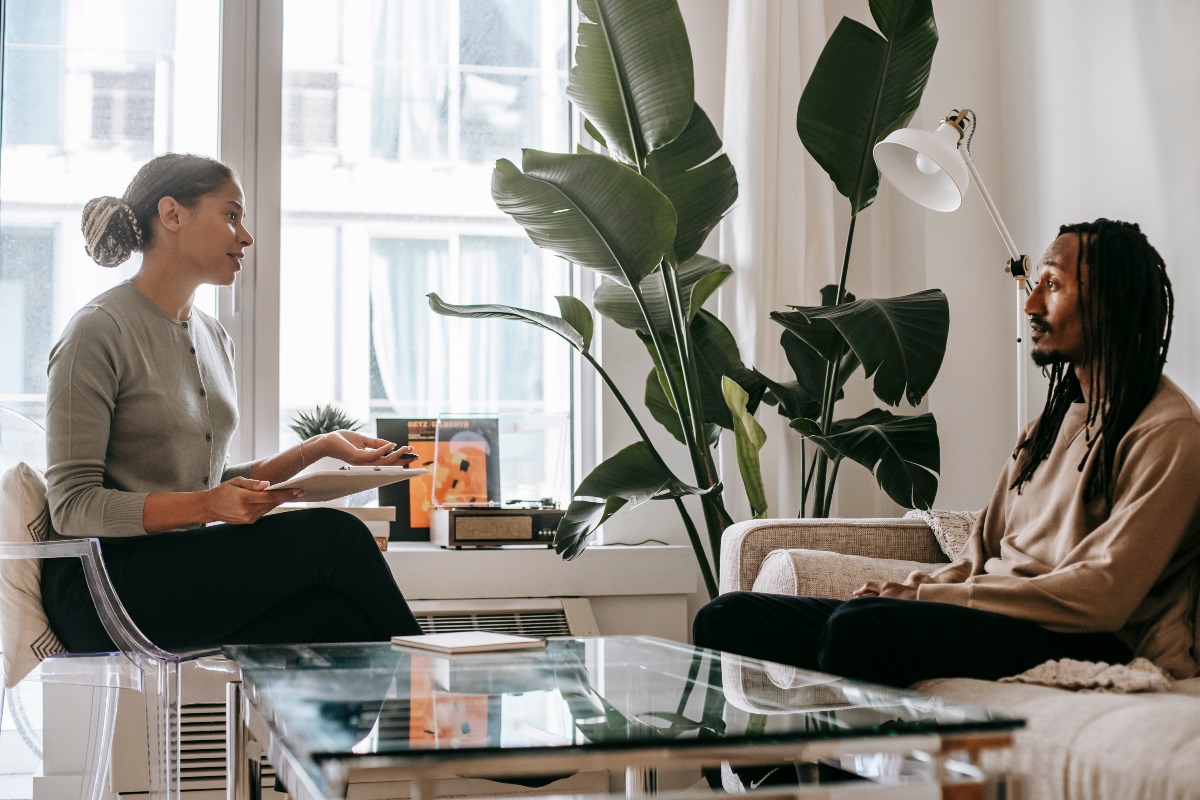
Therapy can feel like a daunting process. You’re unpacking your most personal thoughts and emotions. Additionally, you’re working to change your patterns and heal. Except, you aren’t doing this alone. You’re doing it with a virtual stranger. In order for therapy to work, you need to feel comfortable opening up to your therapist. Collaboration in therapy can allow you to feel in control and empowered. In this blog, we’ll discuss what collaboration can look like in a therapeutic setting.
Collaboration on Therapeutic Goals
When you first start treatment with a therapist, you will have an intake appointment. During this session, they’ll ask you about symptoms, known diagnoses, your past, and issues to focus on. While most of the intake is fact-finding, the last element is an opportunity for collaboration between you and your therapist.
You’ll discuss what specifically brought you to therapy. Your therapist will ask you what you hope to get out of it. This lets you set the stops along the way to healing. From there, your therapist can help you create primary and secondary goals.
The collaboration on goals doesn’t stop at intake, however. Often, as you work through therapy, you’ll uncover issues you weren’t previously aware of. You’ll also identify pain points and traumas. During your sessions, you can ask the therapist to discuss specific topics you now think need priority.
Additionally, you can ask your therapist to avoid a pain point if you don’t feel ready to talk about it. Your therapist may either comply with your request or suggest taking a different approach. Together, through collaboration, you’ll find a way to fulfill your therapeutic goals.
Choosing Therapeutic Approaches
Most therapists specialize in certain therapeutic modalities. Typically, they’ll list their specialties on their website and in directories. Additionally, they may tell you your options during the intake appointment.
If you’re looking for a specific approach to therapy, you should ensure that’s known upfront. Your therapist may think your issues need a different approach than what you’re asking for. In this situation, you might compromise on trying one modality for the time being.
In contrast, you and your therapist might decide to use mixed modalities. This allows you to incorporate elements of various therapy styles. You might intermix traditional approaches like cognitive-behavioral therapy (CBT) with holistic approaches like art therapy.
It’s important to remember that your therapist is the expert. They went through schooling and training for this, so it’s important to consider what they’re saying. At the same time, it’s important for you to feel empowered in your therapeutic journey. This will motivate you to push through the more difficult moments in therapy.
When you start therapy, you may feel nervous or scared. The process requires you to become highly vulnerable with someone else. Collaboration in therapy can help you feel more secure. You and your therapist should work together to create therapy goals. You can also help decide the approach your therapist will take to healing. At The Guest House, our therapists know how to make you feel comfortable opening up. We understand the need for collaboration. We prioritize individualized care plans. With our help, you can feel empowered in your healing journey. Call us at (855) 483-7800.